THE HOBBY
ORIGINS
Small scale ship modeling began in the late 19th century when evolving naval technology demonstrated a need for new tactics in naval warfare as well as a quick and easy way to identify individual ships. To test new tactics, service academies turned to war games, which were popularized around the turn of the century by British naval journalist FRED T. JANE in his annual publication All the World’s Fighting Ships. Along with a set of rules, Jane marketed a series of crude scale models to lend added realism to the games. When the British firm of BASSET-LOWKE began producing much improved models at a consistent scale of 1:1200 (1 inch = 1 foot) in the early 1900’s, the hobby of small scale ship model collecting was born. The wooden Basset-Lowke models set such a high standard in quality and accuracy that they were utilized officially for ship identification purposes by the British Admiralty in World War I.
After World War I, Basset-Lowke successfully transitioned their models to the civilian market, continuing to produce them in wood. In Germany, however, two hobbyists, Friedrich Pelzer and Henning Cortsen, began experimenting with metal castings, and by the early 1930’s were producing spin-cast lead models under the WIKING and PILOT labels. The scale was eventually standardized to 1:1250, the closest metric equivalent to Basset-Lowke’s popular 1:1200. Spin-cast models were introduced to Britain by German expatriate F.L. Winkler, who began producing his TREMO (Treforest Mouldings, Ltd) models as an offshoot of the Wiking line in the late 1930’s. In the USA, H.F.Boucher’s BMC models were used in Fletcher Pratt’s popular naval war game, and Martha Vineyard artist CHARLES VAN RYPER began turning out a series of wooden liner models in 1933 that he continued until 1960.
WORLD WAR II
World War II turned small scale ship modeling from a civilian hobby to a military necessity. Accurate identification of friendly and enemy ships and aircraft was necessary to avoid costly mistakes on the battlefield. Basset-Lowke and Wiking retooled for war, meeting the demand in Britain and Germany for standardized sets of identification models that covered nearly every warship class of the major naval powers.
In the USA, demand for ID models was greater than anywhere else following the attack on Pearl Harbor. Responding to this demand, new firms such as BESSARABIS, FRAMBURG, SOUTH SALEM STUDIOS and COMET utilized spin-casting to mass produce model sets in vast numbers that were packaged in rugged wood cases and sent to U.S. naval ships and bases all over the world. Ship identification handbooks issued by the Office of Naval Intelligence (ONI) also featured photographs of the models taken at various angles from the air and on the surface.
The end of World War II also saw the end of the wartime ship model production effort. Of the US firms, only Comet continued production for the civilian market under the name AUTHENTICAST. Basset-Lowke survived in Britain and the Wiking line was revived in Germany after a brief postwar hiatus. It was these three firms that would carry the hobby through to its eventual transformation beginning in the late 1950’s.
POST WORLD WAR II
The 1950’s saw the introduction of plastics into the mass market. It revolutionized the hobby industry. Model kits of ships, planes, tanks, cars, rockets and other subjects suddenly became available in great quantities and variety. It was a golden age never to be forgotten by those lucky enough to grow up in it.
Plastic ship model kits generally focused on larger scales, but several lines of small scale ships appeared in the late 1950’s-1960’s. The British firm Eaglewall Plastics introduced the EAGLE line of World War II era British ships that were later marketed in the US (with American and Japanese ships added) under the PYRO label as the “Table Top Navy”. Other plastic model firms such as REVELL, AIRFIX and HELLER also had their own lines of 1:1200 scale ships.
Of the older small scale producers, only Wiking experimented with plastics. Several newer classes of ships and aircraft were produced, but the new product never completely replaced lead as the material of choice. Indeed, new British model lines of the 1950’s-60’s (TRI-ANG, OCEANIC, ENSIGN, CLYDESIDE) still relied on time-honored spin-casting rather than plastics, as did the new American line SUPERIOR, which took over from Comet/Authenticast after that line ceased operations in 1962, and is still produced in the US by ALNAVCO.
But it was in Germany that a revolution in casting and production techniques began that would transform the hobby from this time forward.
1960’s – 1970’s
Though Wiking continued to dominate ship model production in Germany throughout the 1950’s, the early ‘60’s saw new firms such as HANSA and DELPHIN turning out models with a higher level of detail and accuracy, to the degree that Wiking ceased production in the early 1970’s. From Austria, they were joined by STAR, ANKER, TRIDENT and HL (Hermann), all utilizing traditional spin-casting techniques and lead as the base metal.
But in Munich, modelers were experimenting with flexible latex molds in place of the hard Vulcanized rubber then in use. Latex molds supported by a plaster jacket allowed models to be cast in one piece, eliminating joint lines and permitting a far greater level of detail to be achieved. This technique eliminated the need for machined brass master models from which the molds were formed. Masters could now be executed in greater detail with plastic, a much easier and less expensive material to work.
Spearheading this revolution were Gerald Schweizer, whose MERCATOR line set a new standard of detail and quality, Willi and Rudi Kraus, who pioneered the use of latex molds, replaced toxic lead with new metal alloys, and improved production techniques to produce the NAVIS/NEPTUN line that raised the Mercator standard even higher, and Peter Wiedling, whose support of these early breakthroughs from his well-known hobby shop in Munich provided the financial backing that allowed their efforts, as well as the efforts of the next generation of modelers, to flourish.
1980’s – 1990’s
The 1960’s breakthrough in casting techniques opened the production of metal ship models to anyone with the urge and the ability to try it. No longer was it necessary to capitalize a production plant. A line of models could now be produced out of one’s basement or garage. Consequently, the 1980’s and 1990’s saw the number of model producers, especially in Germany, soar.
Navis/Neptun remained at the forefront, continuing to blaze new trails in casting, metallurgy and production, but a new generation was rapidly rising. Peter Krtina began producing his HAI models in the mid-1970’s, focusing on unusual ships with a strong “niche market” appeal, Toni Preis and Hermann Stock started the ARGONAUT line of World War II ships in 1974 in direct competition with Neptun, Holger Lange’s ALBATROS line complemented Mercator’s selection of classic liners, Carlo Marquardt’s CM began offering even more liner and merchant ship choices, Norbert Br?cher refined modeling and casting techniques to an even higher level in his RHENANIA line, serving as both inspiration and mentor to a third generation of model builders (including his son Matti), and none less than Graf von Stauffenberg (nephew of Claus, of Operation Valkyrie fame) introduced his own superb line of 19th century steamers and ironclads complete with rigging and sails.
Supporting this thriving hobby were the toy shops and collectors clubs, chiefly in larger cities like Munich, Hamburg and Bremen. Here, collectors and producers would mingle over dinner and drinks, often long into the night, lending a hearty social dimension to what was still a highly localized hobby. And once every other year collectors from throughout Germany, and occasionally beyond, would (and still) gather at the big “Sammlertreffen” (collector’s meeting) at Kassel.
2000 – PRESENT
At the turn of this century, the small ship modeling world was again shaken by a revolution, this one brought about by the computer and its various applications.
By the late 1990’s, several of the newer producers such as CARAT and SEAVEE, began introducing applied photo-etched brass components to their models in the form of deck railings, lattice masts and radar sets, raising the level of detail far above that achievable in cast metal. New developments in plastic resin formulation and casting made it an acceptable substitute for metal, and several producers, notably LEN JORDAN and QUADRANT, raised resin casting to new levels of perfection. By 2005, the science of rapid prototyping allowed computerized laser cut masters to replace the more laborious hand-crafted master models in the production process. Recent models produced by NN-CAD using this technology have taken quality to a high degree of excellence, though at the cost of prolonged production time. With the advent of 3D printing, models can be individually generated to order through on-line production clearinghouses such as SHAPEWAYS, out of various plastics, resins and polymers directly by computer, bypassing the casting process altogether. As this technology evolves, an astounding leap in accuracy and detail fidelity will be possible, though achievable, some would say, at the cost of the human touch.
But the most significant impact of the computer on the hobby for the consumer has been the advent of the Internet. Collectors around the world are now in instant touch with one another by e-mail and on-line message boards such as 1250scale and Dockside. Models are now readily available through internet mail order and web auction sites. Payment transactions and currency conversions are effortless and models shipped overseas often arrive within a week. A revival of interest in the hobby in the US and Britain has resulted in a greatly expanded market and has stimulated new production lines, many of them outside of Germany: SARATOGA, MOUNTFORD, CALIFORNIA, PIERHEAD, HOBBY BOSS, SCHERBAK, ATLAS, LANGTON and ARROWHEAD among others. Collectors meetings are now regularly held in Britain and the United States, and the SMSC is going strong. The future looks bright!
___________________________________________________________________________________________________
Small scale ship modeling began in the late 19th century when evolving naval technology demonstrated a need for new tactics in naval warfare as well as a quick and easy way to identify individual ships. To test new tactics, service academies turned to war games, which were popularized around the turn of the century by British naval journalist FRED T. JANE in his annual publication All the World’s Fighting Ships. Along with a set of rules, Jane marketed a series of crude scale models to lend added realism to the games. When the British firm of BASSET-LOWKE began producing much improved models at a consistent scale of 1:1200 (1 inch = 1 foot) in the early 1900’s, the hobby of small scale ship model collecting was born. The wooden Basset-Lowke models set such a high standard in quality and accuracy that they were utilized officially for ship identification purposes by the British Admiralty in World War I.
After World War I, Basset-Lowke successfully transitioned their models to the civilian market, continuing to produce them in wood. In Germany, however, two hobbyists, Friedrich Pelzer and Henning Cortsen, began experimenting with metal castings, and by the early 1930’s were producing spin-cast lead models under the WIKING and PILOT labels. The scale was eventually standardized to 1:1250, the closest metric equivalent to Basset-Lowke’s popular 1:1200. Spin-cast models were introduced to Britain by German expatriate F.L. Winkler, who began producing his TREMO (Treforest Mouldings, Ltd) models as an offshoot of the Wiking line in the late 1930’s. In the USA, H.F.Boucher’s BMC models were used in Fletcher Pratt’s popular naval war game, and Martha Vineyard artist CHARLES VAN RYPER began turning out a series of wooden liner models in 1933 that he continued until 1960.
WORLD WAR II
World War II turned small scale ship modeling from a civilian hobby to a military necessity. Accurate identification of friendly and enemy ships and aircraft was necessary to avoid costly mistakes on the battlefield. Basset-Lowke and Wiking retooled for war, meeting the demand in Britain and Germany for standardized sets of identification models that covered nearly every warship class of the major naval powers.
In the USA, demand for ID models was greater than anywhere else following the attack on Pearl Harbor. Responding to this demand, new firms such as BESSARABIS, FRAMBURG, SOUTH SALEM STUDIOS and COMET utilized spin-casting to mass produce model sets in vast numbers that were packaged in rugged wood cases and sent to U.S. naval ships and bases all over the world. Ship identification handbooks issued by the Office of Naval Intelligence (ONI) also featured photographs of the models taken at various angles from the air and on the surface.
The end of World War II also saw the end of the wartime ship model production effort. Of the US firms, only Comet continued production for the civilian market under the name AUTHENTICAST. Basset-Lowke survived in Britain and the Wiking line was revived in Germany after a brief postwar hiatus. It was these three firms that would carry the hobby through to its eventual transformation beginning in the late 1950’s.
POST WORLD WAR II
The 1950’s saw the introduction of plastics into the mass market. It revolutionized the hobby industry. Model kits of ships, planes, tanks, cars, rockets and other subjects suddenly became available in great quantities and variety. It was a golden age never to be forgotten by those lucky enough to grow up in it.
Plastic ship model kits generally focused on larger scales, but several lines of small scale ships appeared in the late 1950’s-1960’s. The British firm Eaglewall Plastics introduced the EAGLE line of World War II era British ships that were later marketed in the US (with American and Japanese ships added) under the PYRO label as the “Table Top Navy”. Other plastic model firms such as REVELL, AIRFIX and HELLER also had their own lines of 1:1200 scale ships.
Of the older small scale producers, only Wiking experimented with plastics. Several newer classes of ships and aircraft were produced, but the new product never completely replaced lead as the material of choice. Indeed, new British model lines of the 1950’s-60’s (TRI-ANG, OCEANIC, ENSIGN, CLYDESIDE) still relied on time-honored spin-casting rather than plastics, as did the new American line SUPERIOR, which took over from Comet/Authenticast after that line ceased operations in 1962, and is still produced in the US by ALNAVCO.
But it was in Germany that a revolution in casting and production techniques began that would transform the hobby from this time forward.
1960’s – 1970’s
Though Wiking continued to dominate ship model production in Germany throughout the 1950’s, the early ‘60’s saw new firms such as HANSA and DELPHIN turning out models with a higher level of detail and accuracy, to the degree that Wiking ceased production in the early 1970’s. From Austria, they were joined by STAR, ANKER, TRIDENT and HL (Hermann), all utilizing traditional spin-casting techniques and lead as the base metal.
But in Munich, modelers were experimenting with flexible latex molds in place of the hard Vulcanized rubber then in use. Latex molds supported by a plaster jacket allowed models to be cast in one piece, eliminating joint lines and permitting a far greater level of detail to be achieved. This technique eliminated the need for machined brass master models from which the molds were formed. Masters could now be executed in greater detail with plastic, a much easier and less expensive material to work.
Spearheading this revolution were Gerald Schweizer, whose MERCATOR line set a new standard of detail and quality, Willi and Rudi Kraus, who pioneered the use of latex molds, replaced toxic lead with new metal alloys, and improved production techniques to produce the NAVIS/NEPTUN line that raised the Mercator standard even higher, and Peter Wiedling, whose support of these early breakthroughs from his well-known hobby shop in Munich provided the financial backing that allowed their efforts, as well as the efforts of the next generation of modelers, to flourish.
1980’s – 1990’s
The 1960’s breakthrough in casting techniques opened the production of metal ship models to anyone with the urge and the ability to try it. No longer was it necessary to capitalize a production plant. A line of models could now be produced out of one’s basement or garage. Consequently, the 1980’s and 1990’s saw the number of model producers, especially in Germany, soar.
Navis/Neptun remained at the forefront, continuing to blaze new trails in casting, metallurgy and production, but a new generation was rapidly rising. Peter Krtina began producing his HAI models in the mid-1970’s, focusing on unusual ships with a strong “niche market” appeal, Toni Preis and Hermann Stock started the ARGONAUT line of World War II ships in 1974 in direct competition with Neptun, Holger Lange’s ALBATROS line complemented Mercator’s selection of classic liners, Carlo Marquardt’s CM began offering even more liner and merchant ship choices, Norbert Br?cher refined modeling and casting techniques to an even higher level in his RHENANIA line, serving as both inspiration and mentor to a third generation of model builders (including his son Matti), and none less than Graf von Stauffenberg (nephew of Claus, of Operation Valkyrie fame) introduced his own superb line of 19th century steamers and ironclads complete with rigging and sails.
Supporting this thriving hobby were the toy shops and collectors clubs, chiefly in larger cities like Munich, Hamburg and Bremen. Here, collectors and producers would mingle over dinner and drinks, often long into the night, lending a hearty social dimension to what was still a highly localized hobby. And once every other year collectors from throughout Germany, and occasionally beyond, would (and still) gather at the big “Sammlertreffen” (collector’s meeting) at Kassel.
2000 – PRESENT
At the turn of this century, the small ship modeling world was again shaken by a revolution, this one brought about by the computer and its various applications.
By the late 1990’s, several of the newer producers such as CARAT and SEAVEE, began introducing applied photo-etched brass components to their models in the form of deck railings, lattice masts and radar sets, raising the level of detail far above that achievable in cast metal. New developments in plastic resin formulation and casting made it an acceptable substitute for metal, and several producers, notably LEN JORDAN and QUADRANT, raised resin casting to new levels of perfection. By 2005, the science of rapid prototyping allowed computerized laser cut masters to replace the more laborious hand-crafted master models in the production process. Recent models produced by NN-CAD using this technology have taken quality to a high degree of excellence, though at the cost of prolonged production time. With the advent of 3D printing, models can be individually generated to order through on-line production clearinghouses such as SHAPEWAYS, out of various plastics, resins and polymers directly by computer, bypassing the casting process altogether. As this technology evolves, an astounding leap in accuracy and detail fidelity will be possible, though achievable, some would say, at the cost of the human touch.
But the most significant impact of the computer on the hobby for the consumer has been the advent of the Internet. Collectors around the world are now in instant touch with one another by e-mail and on-line message boards such as 1250scale and Dockside. Models are now readily available through internet mail order and web auction sites. Payment transactions and currency conversions are effortless and models shipped overseas often arrive within a week. A revival of interest in the hobby in the US and Britain has resulted in a greatly expanded market and has stimulated new production lines, many of them outside of Germany: SARATOGA, MOUNTFORD, CALIFORNIA, PIERHEAD, HOBBY BOSS, SCHERBAK, ATLAS, LANGTON and ARROWHEAD among others. Collectors meetings are now regularly held in Britain and the United States, and the SMSC is going strong. The future looks bright!
___________________________________________________________________________________________________
DEALERS
.........................................................................................................................................................................

1250ships.com
Chris Daley
365 Saint Bonaventure, Claremont, CA 91711
e-mail: 1250ships@1250ships.com
Web Link: 1250ships.com
........................................................................................................................................................................................
Chris Daley
365 Saint Bonaventure, Claremont, CA 91711
e-mail: 1250ships@1250ships.com
Web Link: 1250ships.com
........................................................................................................................................................................................
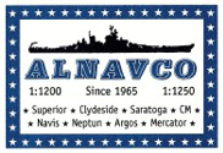
ALNAVCO
Pete Paschal Jr.
PO BOX 10
BELLE HAVEN, VA 23306
Phone: 1-757-442-2323
Fax: 1-757-442-4343
e-mail: alnavco@esva.net
Web Link: ALNAVCO
.........................................................................................................................................................................................
Pete Paschal Jr.
PO BOX 10
BELLE HAVEN, VA 23306
Phone: 1-757-442-2323
Fax: 1-757-442-4343
e-mail: alnavco@esva.net
Web Link: ALNAVCO
.........................................................................................................................................................................................

Antics
Alan Tyndall
49 High St. Stroud, Gloucestershire GL5 1AN, UK
Tel: 01453 764487
Fax: 01453 763991
e-mail: enquiries@antics.ltd.uk
Web Link: Antics
..........................................................................................................................................................................
Alan Tyndall
49 High St. Stroud, Gloucestershire GL5 1AN, UK
Tel: 01453 764487
Fax: 01453 763991
e-mail: enquiries@antics.ltd.uk
Web Link: Antics
..........................................................................................................................................................................
Arrowhead
Miniatures
Jeff Webb
Web Link: http://arrowheadminiatures.co.uk/
.........................................................................................................................................................................................
Jeff Webb
Web Link: http://arrowheadminiatures.co.uk/
.........................................................................................................................................................................................
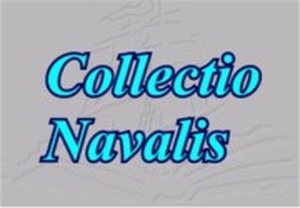
Collectio
Navalis
Schiffsminiaturen und Antiquarische Buecher
Jens Gnewuch
Grolmanstrasse 59
10623 Berlin-Charlottenburg
Tel: 030 / 313 18 81
Fax: 030 / 315 05 231
e-mail: gnewuch@collnav.de
Web Link: Collectio navalis
.........................................................................................................................................................................................
Schiffsminiaturen und Antiquarische Buecher
Jens Gnewuch
Grolmanstrasse 59
10623 Berlin-Charlottenburg
Tel: 030 / 313 18 81
Fax: 030 / 315 05 231
e-mail: gnewuch@collnav.de
Web Link: Collectio navalis
.........................................................................................................................................................................................
Convoy Models
Tim Hudson
52 Long Leys Road, Lincoln, LN1 1DR, UK
Telephone: (00 44) 01522 524672
e-mail: convoy@photrek.co.uk
Web Link: Convoy Models
.........................................................................................................................................................................................
Tim Hudson
52 Long Leys Road, Lincoln, LN1 1DR, UK
Telephone: (00 44) 01522 524672
e-mail: convoy@photrek.co.uk
Web Link: Convoy Models
.........................................................................................................................................................................................
E*S*M*Engert*Ship*Models
Edmund Engert
Postfach/Box 11 42, 96121 Litzendorf/Lohndorf
Phone: 0049/9505/1553
Fax: 0049/9505/6763
e-mail: esm@engert-ship-models.de
Web Link: Engert Ship Models
.........................................................................................................................................................................................
Edmund Engert
Postfach/Box 11 42, 96121 Litzendorf/Lohndorf
Phone: 0049/9505/1553
Fax: 0049/9505/6763
e-mail: esm@engert-ship-models.de
Web Link: Engert Ship Models
.........................................................................................................................................................................................
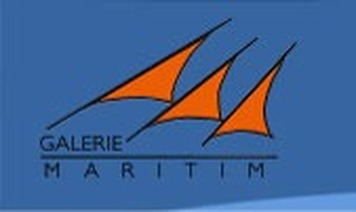
Galerie
Maritim
Jan Mueller
Martin-Luther-Strasse 21
20459 Hamburg, Germany
Tel.: 040-36 43 12
Fax.: 040-36 33 67
e-mail: galerie.maritim@t-online.de
Web Link: Galerie Maritim
.........................................................................................................................................................................................
Jan Mueller
Martin-Luther-Strasse 21
20459 Hamburg, Germany
Tel.: 040-36 43 12
Fax.: 040-36 33 67
e-mail: galerie.maritim@t-online.de
Web Link: Galerie Maritim
.........................................................................................................................................................................................
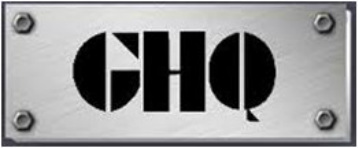
GHQ Models
Gregory Dean Scott
28100 Woodside Road, Shorewood, MN 55331 USA
Phone: 612-374-2693
Fax: 952-470-4428
Orders: 1-800-289-1945
e-mail: customerservice@ghqmodels.com
Web Link: GHQ
........................................................................................................................................................................................
Gregory Dean Scott
28100 Woodside Road, Shorewood, MN 55331 USA
Phone: 612-374-2693
Fax: 952-470-4428
Orders: 1-800-289-1945
e-mail: customerservice@ghqmodels.com
Web Link: GHQ
........................................................................................................................................................................................
Konishi
Metallic Model Collection
Konishi Seisakusho
IKUNO-NISHI 3-13-18
IKUNO-KU, OSAKA, 544-0024 JAPAN
FAX 06-6717-0484
e-mail: komodels@silver.ocn.ne.jp
Web Link: Konishi
.........................................................................................................................................................................................
Konishi Seisakusho
IKUNO-NISHI 3-13-18
IKUNO-KU, OSAKA, 544-0024 JAPAN
FAX 06-6717-0484
e-mail: komodels@silver.ocn.ne.jp
Web Link: Konishi
.........................................................................................................................................................................................
Langton
Miniatures
Rod Langton
North Trendeal, Ladock,
Cornwall TR2 4QQ, U.K.
Tel/Fax: 01726 882805 (uk)
44 1726 882805 (w/w)
e-mail: sales@rodlangton.com
Web Link: Langton
.........................................................................................................................................................................................
Rod Langton
North Trendeal, Ladock,
Cornwall TR2 4QQ, U.K.
Tel/Fax: 01726 882805 (uk)
44 1726 882805 (w/w)
e-mail: sales@rodlangton.com
Web Link: Langton
.........................................................................................................................................................................................

LaWaLu
Modelle
Nils Günther-Eschholz
Lechweg 83, 24146 Kiel, Germany
Tel: +49 172/442 40 82
e-mail: freizeitwelten@arcor.de
Web Link: LaWaLu
.........................................................................................................................................................................................
Nils Günther-Eschholz
Lechweg 83, 24146 Kiel, Germany
Tel: +49 172/442 40 82
e-mail: freizeitwelten@arcor.de
Web Link: LaWaLu
.........................................................................................................................................................................................
Mike's
Modelle
Michael Reiss
miniatur-modelle
Herzog-Welf-Strasse 1
D-85604 Zorneding, Germany Tel/Fax: 08106/998730
e-mail: verkauf@mikes-modelle.de
Web Link: Mike's Modelle
.........................................................................................................................................................................................
Michael Reiss
miniatur-modelle
Herzog-Welf-Strasse 1
D-85604 Zorneding, Germany Tel/Fax: 08106/998730
e-mail: verkauf@mikes-modelle.de
Web Link: Mike's Modelle
.........................................................................................................................................................................................

Miniship
Europe
Dominique Kraus
Malachias Geigerweg 9 D-83670
ad Heilbrunn, Germany
Web Link: Miniship Europe
.........................................................................................................................................................................................
Dominique Kraus
Malachias Geigerweg 9 D-83670
ad Heilbrunn, Germany
Web Link: Miniship Europe
.........................................................................................................................................................................................
Miniature Ship Models
George H. Elder
118 Woodside Circle
White River Junction, VT 05001
Telephone: 802-698-7759
e-mail: GHE101@aol.com
Web Link: http://miniatureshipmodels.net/index.html
.........................................................................................................................................................................................
George H. Elder
118 Woodside Circle
White River Junction, VT 05001
Telephone: 802-698-7759
e-mail: GHE101@aol.com
Web Link: http://miniatureshipmodels.net/index.html
.........................................................................................................................................................................................

NAVWAR
11 Electric Parade, Seven Kings Road, Ilford, Essex, IG3 8BY, UK
FAX: 020-8590-6731
(no e-mail)
Web Link: Navwar
.........................................................................................................................................................................................
11 Electric Parade, Seven Kings Road, Ilford, Essex, IG3 8BY, UK
FAX: 020-8590-6731
(no e-mail)
Web Link: Navwar
.........................................................................................................................................................................................
Optatus-Berlin
Sindy Seeliger
Weidenweg 7A
13591 Berlin, Germany
Telephone: (315) 483-8693
(e-mail via web site)
Web Link: http://www.optatus-berlin.com
.........................................................................................................................................................................................
Sindy Seeliger
Weidenweg 7A
13591 Berlin, Germany
Telephone: (315) 483-8693
(e-mail via web site)
Web Link: http://www.optatus-berlin.com
.........................................................................................................................................................................................
PT Dockyard/Shangra La Ironworks
Dave Gregory
25 Sergeant St
Sodus, NY 14551
Telephone: +49(0)30 3758 9481
e-mail: ptdockyard@yahoo.com
Web Link: http://www.ptdockyard.com
..........................................................................................................................................................................
Dave Gregory
25 Sergeant St
Sodus, NY 14551
Telephone: +49(0)30 3758 9481
e-mail: ptdockyard@yahoo.com
Web Link: http://www.ptdockyard.com
..........................................................................................................................................................................
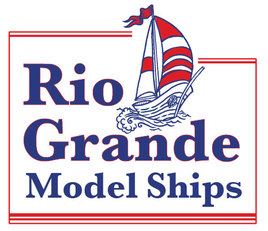
Rio Grande Model Ships
Doug Knowlton
Box 50072, Albuquerque, NM 87181
e-mail: riograndeshipmodel@yahoo.com
Web Link: Rio Grande Ship Model
.........................................................................................................................................................................................
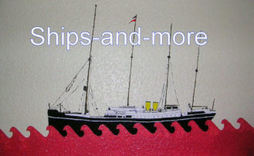
Ships and More
Martin Fortmann
Langstrasse 5, 65558 Gueckingen, Germany
Telephone (mobil): ##49/0152/05745129
e-mail: info@ships-and-more.de
web link: Ships and More
.........................................................................................................................................................................................
Martin Fortmann
Langstrasse 5, 65558 Gueckingen, Germany
Telephone (mobil): ##49/0152/05745129
e-mail: info@ships-and-more.de
web link: Ships and More
.........................................................................................................................................................................................
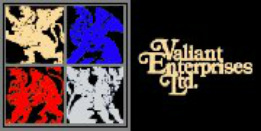
Valiant
Enterprises
1122 O'Neill Ave, Madison, WI 53704-4226
Telephone: 608-294-1050
Fax: 608-294-1051 e-mail: sales@veltd.net
Web Link: Valiant Miniatures
........................................................................................................................................................................................
1122 O'Neill Ave, Madison, WI 53704-4226
Telephone: 608-294-1050
Fax: 608-294-1051 e-mail: sales@veltd.net
Web Link: Valiant Miniatures
........................................................................................................................................................................................
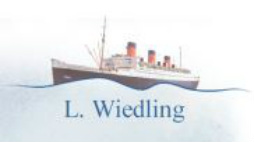
L.
Wiedling
Peter Wiedling
Dr. Max Str. 29, D 82031 Gruenwald, Germany
Tel: 0049 89 641 10 90
Fax: 0049 89 641 54 41
e-mail: ships@wiedling.de
Web Link: L. Wiedling
_________________________
Peter Wiedling
Dr. Max Str. 29, D 82031 Gruenwald, Germany
Tel: 0049 89 641 10 90
Fax: 0049 89 641 54 41
e-mail: ships@wiedling.de
Web Link: L. Wiedling
_________________________
PRODUCERS
This guide lists the most
prominent production lines of small scale ship models that are available today. It is not meant to be comprehensive. Well
over 400 separate lines of models have been produced over the past century, and
the number of individual producers active at the present time is somewhere
around 50.Germany remains the heart of the hobby, but model producers can be
found in England, Scotland, France, Austria, Switzerland, the Netherlands and
Japan, as well as here in the United States. Model lines still in
production are in boldface
type; others are out of production and available only on the second-hand
market. Where known, the model producer’s name appears next to the name of the
model line, and web site references are given if available. Much of the
information here is courtesy of Miniature Ship Models by Paul Jacobs and
the 1/1250 scale web site (1250scale.com/The Model Makers).
................................................................................................................................................................
1250 MODELS: (Chris Daley) A small line of excellent quality, post-WWII era warships and supporting aircraft, chiefly US, Dutch and Italian. (1250ships.com).
AEGIR: (Lasse Frosberg) A small line of highly detailed inter-war merchant ships. Nearly all models are of British vessel.
A.H. MODELS: (Alan Hodder) The successor to his brother Les Hodder's Wirral line, Alan offers completed Len Jordan and upgraded Degen/Hein-Mueck resin models, mainly merchant and passenger though some are WWII naval conversions.
ALBATROS: (Holger Lange) A major producer of liners and merchant ships, Albatros also produces some handsome modern warships, and a few armed merchant cruisers, hospital ships and other converted merchant ships (www.albatros-miniaturen.de ).
ALBERT: (Alfred Albert) produced a series of resin sailing warship models from the mid-1970's to the mid-1980's. Castings varied in quality and not all models were numbered. Most seem to have circulated among members of the Frankfort (Germany) Collectors Club.
ANKER: (Linhartsberger) A small line of mostly odd warships, many of which represent never-built designs.
AQUARIUS: (Andreas Prinz) A line of mainly sailing ship models and U.S. Civil War ships, beautifully done but now out of production due to the untimely death of its producer. Molds have been acquired by Oliver Maertins, who is reviving the line under his WDS-LIZ label.
ARGONAUT: (Toni Preiss) Primarily WW II warships. The line includes a large number of British ships, and smaller numbers of U.S., French, and Italian ones. Also almost the entire Dutch and Spanish navies are represented, as well as South American and other world navies. Models were produced in limited numbers and may be hard to get. Some models were improved and re-released. Quality is uniform, but not up to that of Neptun. Destroyers and small warships are especially good. Argonaut's molds have been acquired by Oliver Maertins, who has begun reissuing upgraded versions under his WDS-LIZ label.
ARGOS: (Joerg Uter) produces a line of well detailed models. The line includes mostly modern U.S. and Russian warships, including ARLEIGH BURKE class and several AEGIS cruisers. In addition there is a small range of little ships from various countries from the 19th and 20th centuries as well as aircraft and accessories (www.uss-argos.com).
ARROWHEAD MINIATURES: (Jeff Webb) is a new UK based producer of 1/1200 scale warship kits, initially concentrating on WWI British subjects. Quality is comparable to GHQ, and is suitable for both collectors and wargamers
ASY/ANDREWS SHIPYARD: (Don Andrews)The California based Andrews Shipyard produces a small line of 1/1200 scale ship models, mainly never-built designs. Don also does custom paint jobs and can repair just about anything (www.theandrewsshipyard.com).
ATLANTIS: A small line, mostly of post WWII warships from smaller navies.
ATLAS EDITIONS: A recently introduced line of well crafted die-cast metal waterline and full hull 1/1200 scale models of famous WWII warships, such as BISMARCK, HOOD, and ARIZONA.A division of D’Agostini Publishers, Atlas models are available by internet order and targeted for a younger market, though many older collectors find them of interest.(www.atlaseditions.co.uk ).
AUTHENTICAST: (Joseph& Samuel Slonim) carried on the Comet line of WWII ID models into the Postwar period until the 1960’s, when it was succeeded by Superior.
BASSET-LOWKE: One of the earliest and most enduring producers of wood models in all scales. Models are now highly valued collectors items.
BESCH MODELS: Wilhelm Besch (Krokusweg 9, 23617 Stockelsdorf, Germany) specializes in container cranes and other harbor diorama components.
BESSARABIS: One of the early US makers of WWII identification models.
BIEDEKARKEN: (Christian Biedekarken) A small line of modern merchant ships.
BILLE: (Peter Jahnke) produced high quality models, mainly of large modern commercial ships. Now out of production many are available as reissues through Optatus/WDS.
BM: (Karl-Heinz Binkowski) produced mostly 19th C. German warships, although he did some 20th C. vessels. These models were produced in limited numbers, beautifully detailed (often with sails), and finely painted.Line has recently ceased production.
CALIFORNIA MODELS: (Chris Daley) A small line of high quality models, mainly of commercial vessels.
CAP AERO: A wide range of 1/1250 scale aircraft, both commercial and military.
CARAT: (Manfred Bergmann) Super-detailed models of liners and merchant ships, which are rigged and have railings and other minute details. The related Carat Ferry Club (CFC) produced models of European ferries to an equal standard. Carat and CFC have ceased production but some of their models may still be obtained through CSC.
CLASSIC SHIP COLLECTION (CSC): (Jan Mueller) High quality collectors models, mainly of large, famous liners. Most of these models are sold full-hull mounted on wood stands and in display cases, but some can be obtained in waterline. CSC has announced that it will take over the Galerie Maritim shop in Hamburg as its exclusive retail and shipping outlet as of January, 2015 (www.classic-ship.de ).
CLYDESIDE: (Bill Gilpin) of Scotland produces sturdy models of WWII ships popular with wargamers and collectors alike (www.clydeside-flotilla.com).
CM: (Carlo Marquardt) A line primarily of pre-WWII liners and merchant ships of reliable quality. Postwar liners, merchants and cruise ships are produced under the CM-KR label, and a number of military conversions and warships are available under the CM-P label.A good, mid-priced alternative to the more expensive Classic and Carat models. (www.cm-miniaturen.de).
COASTLINES: (Roger Dawson) A line of small coastal ship types as well as lighthouses, Uboat bunkers and coastal forts exclusive to the UK's major dealer, Antics. The models are designed to allow the re-creation of scenes showing model ships in realistic settings.
COLONIA: (Hans Freese) A small line of nicely done passenger ships.
COMET: A major US producer of WWII identification models, continued by the Slonim brothers under the Authenticast label postwar.
CRUISE LINE MODELS: (Dave Mosley) A new line of 3D printed models primarily devoted to harbor buildings and accessories as well as ships of various scales.
DEDO: A small line of merchant ships and Canadian coast guard vessels by Michael Dollenbacher.
DEEP C: (Brian Robinson) A small line of resin ships, mostly British coasters, tugs and merchant ships.
DEGEN: (Ralf Degen) Also known as Hein Mueck, this company produced an extensive line of liners and merchant ships in resin. All models came complete and painted. Quality, though uniform, is considered below that of most other European producers. After Ralf Degan’s death some of the moulds were sold to the British model maker Wirral, and are being reworked and reissued by AH Models .
DELPHIN: (Roland Sattler) One of the important producers of ships back in the 1960's and 1970's, Delphin has long been out of production. Hansa purchased some of their moulds and re-released a few of their better models. Delphin primarily produced warships from WW II and the post war era, producing a total of over 160 different ships.
EAGAN SHIPS (John Eagan), one of a handful of US producers, produced a limited selection of naval and passenger ships as well as custom dioramas.
FERRY SMALL SHIPS: (Alastair Hopkinson), a brand new producer, concentrating on resin models of European ferries (Ferry Small Ships).
FIGUREHEAD: Noble Miniatures produces an expanding line of aircraft (Cap Aero) and small warships in kit form suitable for both wargaming and collecting (www.nobleminis.com).
FLEETLINE: An extensive line of British made kit-models covering WWII period warships of the major nations as well as several U.S Civil War ships.
FO / MARE NOSTRUM MINIATURMODELLBAU: (Florian Oesterreicher), a new producer specializing in Italian ferries. See their Facebook page for the latest offerings.
FOERDE: (Klaus Dietzsch) produced a considerable number of WWII German naval auxiliaries and merchant ships, many of which were patterned in camouflage.
FRAMBURG: US producer of WWII identification models.
GEM: (Dieter Schock) A small line of finely detailed sailing ship models.
GHQ/MICRONAUT: Good quality Napoleonic era sailing ship model kits.Also produces an extensive line of 1/2400 scale warships from the 1860’s to present (www.ghqmodels.com).
GRIFO: Italian producer of Italian warships, long out of production.
GRZYBOWSKI: (Georg Grzybowski) Eccentric German producer of merchant, liner and occasional warship models in the 1960’s. Many of his models were reissued by other producers (CM, Mercator, Rhenania) after his death.
GWYLAN MODELS: (Will Jayne) until recently offeried commercial and naval ship models incorporating the latest rapid prototype detailing as well as decal/transfer sheets for customizing generic ship and aircraft models, and photoetch upgrades for Hobby Boss model kits. Small scale model production has ceased, but production in larger scales continues.
H&B: (Jurgen Streich) produces a small line of about 30 ships, nearly all Japanese, and mostly warships. None of those are major warships, but instead are submarines, gunboats, sub chasers and auxiliary warships. Most models out of production; all highly detailed, including his classic submarine I-8 with a tiny GLEN seaplane aboard.
H.P. WEISS: These models are made out of paper in incredible detail. Unique, one-of-a-kind, definitely collectors items, they carry prices to match.
HAI: (Peter Krtina) An extensive line of warships spanning the period from the 1860’s to the present. Subjects are eclectic, often representing unusual navies, time periods and ship types with a heavy recent concentration on the late 19thcentury.
HAMMONIA: (E.A.Meyer) specializes in small German merchant and harbor vessels with a few borderline naval vessels.
HANSA: (Schowanek/Conrad) One of the oldest lines of German made models and considered a classic standard by many collectors. Hansa has produced an extensive line of 20th century warships and merchant ships. Purchased by Conrad in the 1990's, the company has been around since the late 1950's, long enough to have produced three different versions of the CGN Long Beach over the years. Hansa models are not considered comparable in quality to Neptun, but they have produced some desirable models which have not yet been made by anyone else.
HDS: (Heinz-Dieter Schlingelhof) a line of basic level low-priced resin ships and planes, chiefly WWII-postwar, now out of production.
HEINRICH: (Wilhelm Heinrich) produced a limited series of exceptionally detailed fully rigged historical sailing ship models complete with wall mounted display case. Extremely delicate and rare, these are among the most prized models to be found anywhere.
HELVETIA: (Joe Weber) Czech-made merchant and small passenger ships with a sub-line of ancient Greek and Roman galleys.
HF: (Helge Fischer) produces a small line of ships, mainly submarines, gunboats, and patrol craft. All models are Neptun quality.
HIGHWORTH: (Martin Brown) A UK line, which briefly offered a small selection of present-day Russian subs and British warships.
HL: (Leopold Hermann) an early producer of merchant and warship models, mainly Austrian.
HOBBY BOSS: A new producer of 1/1250 scale plastic full hull model kits based in China.Its limited range concentrates so far on present-day US warships.Ideal for kids, though photoetch upgrades are available for more serious collectors. (www.hobbyboss.com).
HOLSATIA: (Eckart Bolte) A small line of modern ferries, cruise ships and merchant ships.
HYDRA: (Axel Deisinger) offers a range of small European ferries and lightships (www.hydra1250.de).
INTUG: specializes in tugs, mainly European.
JW: (Johann Wolkersdorfer) has produced an exceptional, well-researched line of unusual historic ships from ancient times to the 16th century.A sub-line JWX offers a selection of 19th century ships, mainly ironclads of the Turkish and Russian navies.
KLABAUTERMANN: (Thomas & Norbert Broecher) produces highly detailed merchant ship models as well as a sub-line of post-WWII French warships.
KONISHI: (Konishi Seisakusho) The only maker of 1:1250 waterline models in Japan, the bulk of this line is comprised of WW II Japanese warships. The company also produces some merchant ships, liners, modern Japanese warships, ships of the Russo-Japanese War, and some non-Japanese ships. Unique in having brass parts fitted to metal hulls produced by the "lost wax" process, these models lack the fine detail found in the best European models, but are still very desirable models prized by many collectors (www3.ocn.ne.jp/~konishi/english.htm).
LAIVA: (Ralf Baumanns) produces a selection of Baltic Sea ferries, icebreakers, passenger and sailing ships.
LANGTON: (Rod Langton) produces a very extensive line of 1:1200 kits of ancient, Renaissance, and 18th and 19th Century sailing warships, as well as a wide array of buildings, and harbor parts. Also produces a large number of American Civil War vessels.Flags, accessories and wargame rule books are also available. (www.rodlangton.comwww.rodlangton.com ).
LEN JORDAN: Unique among producers, Len Jordan made unfinished 1:1200 models in resin and metal. Few others work in resin, and hardly any sell models unfinished. The models come cast in one piece, lacking masts, and unpainted. Masts are not included and must be made by the purchaser. Jordan specialized in British merchant ships and liners, but did produce a few U.S. vessels, including the Liberty and Victory ship, T-2 tanker, and C-3 cargo ship.
LLOYD: (Peter Krtina) a small line mostly of merchant ships, ferries and small passenger ships.
LLYN: (Steve Cracknall) offers models of British tugs and small working ships.
LOFTLINES: (Gary Anson) A recently introduced line of modern resin naval and commercial ships produced in the UK. (gary.anson@talk21.com)
LUNA: (Adolf Bellman) Mainly late 19th and early 20th century merchant ships including a number of sailing ships, revived for a brief time by Oliver Maertins.
MBM: (Martin Brown) offered a small line of models produced by various model makers and sold under a common label. Subjects covered surface warships from WWII to the present, and was to have included the eventual completion of the line of British submarines begun by Duncan Robinson.
MERCATOR: (Gerald Schweizer) One of the major producers of the 1960’s through the 1980’s, Mercator temporarily ceased production in the 1990’s when ownership changed. Primarily a producer of liners and merchant ships, Mercator also produced a selection of warships, and is famous for its line of Russian “ Tsushima” ships. Molds were purchased by Skytrex, which continued to issue an expanded line of liners and cruise ships until the early 2010's. Upon liquidation of the firm in 2013, Skytrex offered the molds individually for sale to collectors, so it is unlikely that the complete Mercator line will ever be revived.
MIKE'S MODELLE: (Michael Reiss) is both a dealer and producer of a small number of unusual warship and aircraft models, and offers air wing groupings for carrier models made by other producers (www.mikes-modelle.de).
MINITEC MODELS: A Portuguese producer/dealer specializing in cruise ship and liner models of good quality at a reasonable price. They also offer selected Risawoleska models for sale.
MOUNTFORD: (David Love) offers a line of reasonably priced 1/1250 scale models and kits covering US and British warships, harbor facilities, scale vehicles and armor, decals, icebergs and space rockets. (www.mountfordmodels.com).
MZ MODELS: (Mark Zolna) is among the newest 1/1250 scale producers. Starting as a joint venture with Mountford in 2011, MZ now produces metal finished models and kits of present day US warships on its own from its new home base in Michigan (www.mzmodels.com).
NAUTILUS: A small, out-of-production line specializing in never-built designs of Germany’s WWII Kriegsmarine.
NAVIS/NEPTUN: (Rudi Kraus) Neptun is by far the largest producer and sets the standard by which all models in the scale tend to be judged. All models are of a uniform, high quality. The Neptun line is devoted to warships of the major navies of WW II, and is expanding into the post-war era. The Navis line is devoted to warships of WW I. Older Navis models generally lack the level of detail of Neptun models, but the line is gradually being upgraded to Neptun quality. In addition, the company has renewed its new old line of Copy models to produce high quality copies of the famous Von Stauffenberg models. Navis/Neptun continues to produce past issues and upgrades of older models, but new models from CAD/RP generated masters will be issued under the Spider Navy label beginning in 2015. (www.navis-neptun.de).
NN-CAD: (Egbert Kraus) An offshoot of Navis-Neptun, NN-CAD utilized the latest in computer aided design technology to produce high quality models in the mid to high price range, concentrating on the post-WWII era. Production was transferred to Johann Ottmann's Spider Navy series in 2015.
NAVWAR has produced a line of wargamer quality 1/1200 and 1/300 scale models since the 1970's. Time periods cover ancient and Renaissance galley warfare, the Armada, Dutch wear and Napoleonic eras and the US Civil War.
NOORDZEE: (Robert DeVlam) A line of Neptun quality models, consisting almost exclusively of Dutch liners and merchant ships with a few warships. Production was limited and ceased with the death of its producer. Since the molds were destroyed, the models have become highly prized and sell second-hand at very high prices.
NORTH HEAD: (Simon North & David Carlton) This New Zealand based producer introduced 3-D printed acrylic kits covering British, Latin American, Russian and Turkish ironclads and small attack craft from the 1967 Arab-Israeli War in the early 2010's. Producers have suspended the line for personal reasons, but models can still be obtained through Shapeways Miniatures (www.shapeways.com/shops/nhminiatures).
OCEANIC: (Gerry Skinner) An extensive line mainly of small British WWII and postwar naval ships.
OMS/Orzel Model Ships: (David Orzel) a new U.S. producer specializing in resin models of ironclad era ships.
OPTATUS: (Oliver Maertins) covers a broad range of original models and reissued, upgraded models cast from the molds of several out-of-production lines, such as Vindabona, Sextant and Ostrowski.The original models include several WWII Japanese and British destroyer classes customized in camouflage. In 2013, production was taken over by Oliver's assistant Sindy Seeliger, whose new firm OPTATUS-BERLIN (http://optatus-berlin.com/) reissues selected Optatus, Sextant, Ostrowsky, Bille, Kyle and Luna models , but no longer produces new issues. Oliver has since re-entered the business with new production of selected "licensed" models from other former producers (Argonaut, Aquarius, Seestern, Vindobona) as well as his own Optatus and WDS models under the WDS-LIZ label (www.schiffmini.de).
OSTROWSKI: A line of Polish made models, all merchant ships, mostly post World War II era.
PHAROS: (Norbert Broecher) focuses on European lighthouses and lightships.
PIER HEAD: (Chris Hankin) Neptun quality models of British ferries, tenders and other small ships.
PILOT: one of the founders of the hobby in Europe, long out of production.
POSEIDON: (Carlo Marquardt) a line of unusual models including a number of OpSail “tall ships” and the WWII Thai navy.
QUADRANT: (Alain Picouet) produces a line of hand-painted limited edition resin models, including most of the SURCOUF Class escorteurs, the CHARLES DE GAULLE, U.S. CVA FRANKLIN D. ROOSEVELT circa 1957 and the U.S. CVA SHANGRI-LA, as well as many post-war US and Soviet submarines. These fine models are beautifully done, but production has been suspended indefinitely.
RG: (Rainier Grouls) produces a variety of different ships, from small odd warships to large liners and merchant ships. Quality is uniformly excellent.
RHENANIA: (Norbert Broecher) A varied line of fine, high quality models, featuring a variety of eclectic warships and merchant ships. Production is limited and, unlike the bigger manufacturers, models are discontinued when a run of castings is done.
RHENANIA JUNIOR: (Matti Broecher) A fast-growing line of mainly modern European commercial ships and harbor craft. A recent offshoot (RJN) offers naval auxiliary and coast guard vessels, all of which are extremely well done.
RISAWOLESKA: (Burkhard Schuett) produces a line of beautifully detailed vessels, mostly ferries and merchant ships of the countries that border the Baltic Sea as well as selected passenger liners (www.risawoleska.de).
RODKLING: (Roland Klinger) Finely crafted harbor accessories and dockyard cranes along with an unusual selection of ships of special engineering interest, such as the Hughes Glomar Challenger. Production runs are limited.
ROSTOCKER: (Dieter Schock) A high quality line of 19th-20th century sailing ships
SANTA ROSA SHIPS: (John Staggs) Resin models, mainly of UK WWII auxiliary and coastal ships.
SARATOGA MODEL SHIPYARD: (Paul Jacobs) A growing line of models, most of which are U.S. Naval auxiliaries of the inter-war era, along with a number of small French naval vessels and tugs.
SCHERBAK MODELS: (Alexander Scherbak) One of the few US producers offers high quality resin models of modern cruise ships.Fully painted “Collector” and partially painted “Souvenir” grades are available. (scherbakshipmodels.tripod.com).
SEAVEE: (Sean Pritchard) This is a small, limited production, line of models. Most are post WW II US and British naval subjects. High quality models, with excellent detailing, including decaling and photo etched brass parts. Not sold through dealers, they can be obtained, when available, direct from the manufacturer. Contact him at: Seavee2006@hotmail.co,uk or 41 Route De Moissun, St. Junien, 87200 France. (Sean Pritchard)
SEXTANT: This line of models dates back to the 1970's. Production numbered over 200 different models, nearly all modern merchant ships. Many have been refurbished and reissued under the Optatus label. A number of warship models were also produced, including the Battle of Lissa's Austrian and Italian fleets, several of which have been reissued by Hai.
SHANGRA LA IRONWORKS: (Dave Gregory) The 1250 arm of the larger scale P.T. Dockyard, Shangra La concentrates on resin models of "overlooked vessels of the 1914-1945 era", including some interesting never-built designs (http://www.ptdockyard.com )
SKYTREX: (John Hammond) This British firm, which acquired the Mercator liner and Triton molds and reissued them for a time under its own name in the 1990's-2000's, discontinued production in 2013 and sold many of the molds to private collectors. Though the firm has revived under new management, it is unlikely that it will resume production of small scale ship models.
SHAPEWAYS MINIATURES: The New York based "Marketplace" for 3-D printing offers just about anything conceivable that can be printed in three dimensions using the latest commercial rapid prototyping technology. One can not only buy and sell, but also create one's own products online. Among the thousands of products available are several lines of 1:1200 and 1:1250 scale ship models including a range of Soviet/Russian warships by Decapod and the revived North Head Miniatures. The best way to navigate the site is to utilize the search option by typing in 1/1200 or 1/1250 (www.shapeways.com).
SOLENT SHIP MODELS: a new range of UK produced coastal and cross-channel steamers.
SOUTH SALEM: (Enzo Yocca) US producer of WWII identification models.
SPIDER NAVY: (Johann Ottmann) produces rigged and painted showcase versions of Navis/Neptun models, and has recently introduced its own series of sail-steam era ships under the NN-CAD umbrella. Beginning in 2015, Spider Navy will take over production of all planned NN-CAD releases (http://www.spidernavy.de/ ).
STAR: Long out of production, Star was one of the main producers in the 1960's and 1970's, producing over 170 warships including quite a few American Civil War ships.. One of the few to produce kits, most Star models are by today’s standards mediocre in quality. A few unusual models in the line are still sought after.
STAUFFENBERG MODELLE: (Graf Markwart von Stauffenberg) These beautifully painted and detailed models, mainly of rigged 19th century ironclads, were made in limited numbers and are hard to get. Navis/Neptun produces some for commercial sales under the Copy label. [Historical note: Graf von Stauffenberg was a distant nephew of Claus von Stauffenberg, who led Operation Valkyrie, the abortive coup against Hitler in July, 1944.]
SUPERIOR: (Peter Paschal) Distributed by Alnavco of Belle Haven VA., this is one of the few U.S. producers of waterline models. The line is primarily warships of WW II. Unlike all the continental European makers, Superiors are 1:1200 scale (as are most models made in England). Superior has a long history dating back to 1962 when it began production after purchasing the old Comet/Authenticast line. Superior models are of uniform quality, but that does not place them in the same league as the European made models. The line is a direct descendent of the WW II identification models made for the Navy and as such are based on moulds designed in the 1940's. Despite attempts to upgrade them they simply cannot compare in detail or accuracy of scale with their more modern European equivalents and are not popular with collectors of European models. Reasonably priced, and very hardy, they are favored by war gamers (www.alnavco.com).
TARGET: (Gerry Skinner) is an extensive line line of smaller Victorian through WWI era warships long out of production and fairly rare. Known to few outside the UK, it is being slowly revived by Dave Willcocks, who occasionally offers fresh castings from the original molds on e-bay.
TREMO: TreForest Moulding was started in Britain in the 1930's and put out of business when the war began and the owner was interned as an enemy alien! Crude by today’s standards, during the 1930's they were one of the mainstays of the business along with Wiking. Although claiming to produce ships of several major navies, most of their production was of British ships. Check the ads in Jane’s Fighting Ships of the 1930's, and you’ll find theirs with photos of some of their models. Because their production was more limited than that of Wiking, their models are much more scarce.
TRIANG: (William, Walter & Arthur Lines) Among the more toy-like of 1:1200 models, this company began production in Britain in 1958 and continued until 1972. Later, models were issued under the Hornby label. The warships produced were all British from the 50's and 60's and very simple. Early Triang warships were painted a bright blue color. Later models were a more conservative grey however. About two dozen liners and merchant ships were produced and an extensive series of harbor parts. The liners and merchant ships were also mostly British, and generally were better castings than the warship models. Cheap and popular back in the early 60's, Triangs were largely discarded by collectors as the better German made models came into large scale production. But in recent years Triangs have become nostalgic collectibles, as men who grew up with them as boys, now remember them with fondness. In recent years, an English collector Charles Shave, revived the line and added many new models including modern Royal and U.S. Navy ships (www.triangminicships.com).
TRIDENT: Long out of production, this was a large line of models covering ships from as early as the 1890's to the present. Quality may vary widely. The moulds have been purchased by Hai, who may eventually produce some of the models in this line.
TRIDENT ALPHA: Also out of production, Trident Alpha began as a revival of the Trident line and was later extended to include a large number of U.S. and Soviet post-WW II warships. Especially popular are its plastic models of several U.S. Navy super carriers. Many are still available second-hand. Quality may vary among models.
TRITON: A range of Cold War era warships, 19th century British ironclads, historical ships and a wide selection of harbor accessories made in the UK during the 1980’s and 90’s. A number of their models were later reissued by Skytrex, and many can still be found through second-hand sources.
TTH: The Technology House is a product development firm that produces a small line of spin-cast 1/1200 scale pewter models of US warships. Collectors may be disappointed in the filled-in tripod and lattice masts, but the company claims to have rapid prototyping capabilities (www.tth.com).
U-9: (Gunter Koch) A small line of excellent quality limited editions of small German WWII ships.
USA: A small relatively new line issued for a time by George & Jiehui Elder of MSM with models by different master builders.
UNICORN: (John Staggs) A limited line of UK produced British WWII ships.
VAGEL GRIP: An eclectic line of coastal vessels and other European small craft produced by Reinhard Kramer of Rostock.
VALIANT: Nicely done U.S. made kits of ancient galleys, Spanish Armada and Napoleonic sailing warships suitable for wargaming and collecting (www.veltd.net).
VINDABONA: (Richard Sattler) A line of 50 different models, mostly merchant ships.Molds are now owned by Oliver Maertins (Optatus), who has reissued a number of retooled versions of the models.
WDS/ WELT DER SCHIFFSMINIATUREN: (Oliver Maertins) A special line of models produced for some years by Oliver parallel to his Optatus line, it has become the label under which all future models issued by Oliver will be released, including defunct lines such as Argonaut and Aquarius (www.schiffmini.de)..
WELFIA: (Winfried Bormann) produces a line of mainly small, unusual and rare vessels converted to German warships; also coastal forts, and other odds and ends. Quality of the ship models is excellent, but production is very limited and the models are not readily available through dealers.The line recently seems to have ceased production.
WIKING: Clearly the first in the lineage of 1250 scale European cast metal models, Wiking dates back to the late 1920's. Producing a line of European and American contemporary warships, Wikings were used by the German military for ID purposes during WW II. Some Wikings were copied by Comet. The war put the company out of business, but it was revived in the late 1940's and during the 1950's it produced a number of new models, some in metal, some in metal and plastic such as the CVA Forrestal, CA Boston, and the Soviet CL Sverdlov. Some of the older models were also re-released in metal and some done entirely in plastic. Production finally ceased forever in the 1970's, due to competition from the newer higher quality models then coming into production. Pre-war Wikings in good condition have brought high prices in recent years as they have become collectable "antiques." These models clearly lack the detail of the more modern models, but they can be attractive and interesting (www.wiking-schiffsmodelle.de).
WIRRAL: (Les Hodder) until recently offered unfinished Len Jordan models completed as beautifully finished products. All are merchant ships and liners, primarily British. His work is being continued by his brother Alsn (see A.H. Models).
WTJ/ WAR TIMES JOURNAL: 3D printed plastic models of wargamer quality done in a variety of scales, the most recent being 1/1200. Concentration is on the pre-dreadnought and WWI periods (www.wtj.com/store/index.html).
YORCK: (Dr. G.Judas) An eclectic collection of ships, mainly secondary and auxiliary warships of the 20th century and the largest proportion, German. Originally sold as unfinished metal castings, Yorck models have out of production since the 1980's and can only be obtained second-hand.
YSM: (John Youngerman) A US producer well known for his scratchbuilding skills, Youngerman maintains his own line as well as producing models for the Hai, Neptun and other producers’ labels (Youngerman Ship Models).
................................................................................................................................................................
1250 MODELS: (Chris Daley) A small line of excellent quality, post-WWII era warships and supporting aircraft, chiefly US, Dutch and Italian. (1250ships.com).
AEGIR: (Lasse Frosberg) A small line of highly detailed inter-war merchant ships. Nearly all models are of British vessel.
A.H. MODELS: (Alan Hodder) The successor to his brother Les Hodder's Wirral line, Alan offers completed Len Jordan and upgraded Degen/Hein-Mueck resin models, mainly merchant and passenger though some are WWII naval conversions.
ALBATROS: (Holger Lange) A major producer of liners and merchant ships, Albatros also produces some handsome modern warships, and a few armed merchant cruisers, hospital ships and other converted merchant ships (www.albatros-miniaturen.de ).
ALBERT: (Alfred Albert) produced a series of resin sailing warship models from the mid-1970's to the mid-1980's. Castings varied in quality and not all models were numbered. Most seem to have circulated among members of the Frankfort (Germany) Collectors Club.
ANKER: (Linhartsberger) A small line of mostly odd warships, many of which represent never-built designs.
AQUARIUS: (Andreas Prinz) A line of mainly sailing ship models and U.S. Civil War ships, beautifully done but now out of production due to the untimely death of its producer. Molds have been acquired by Oliver Maertins, who is reviving the line under his WDS-LIZ label.
ARGONAUT: (Toni Preiss) Primarily WW II warships. The line includes a large number of British ships, and smaller numbers of U.S., French, and Italian ones. Also almost the entire Dutch and Spanish navies are represented, as well as South American and other world navies. Models were produced in limited numbers and may be hard to get. Some models were improved and re-released. Quality is uniform, but not up to that of Neptun. Destroyers and small warships are especially good. Argonaut's molds have been acquired by Oliver Maertins, who has begun reissuing upgraded versions under his WDS-LIZ label.
ARGOS: (Joerg Uter) produces a line of well detailed models. The line includes mostly modern U.S. and Russian warships, including ARLEIGH BURKE class and several AEGIS cruisers. In addition there is a small range of little ships from various countries from the 19th and 20th centuries as well as aircraft and accessories (www.uss-argos.com).
ARROWHEAD MINIATURES: (Jeff Webb) is a new UK based producer of 1/1200 scale warship kits, initially concentrating on WWI British subjects. Quality is comparable to GHQ, and is suitable for both collectors and wargamers
ASY/ANDREWS SHIPYARD: (Don Andrews)The California based Andrews Shipyard produces a small line of 1/1200 scale ship models, mainly never-built designs. Don also does custom paint jobs and can repair just about anything (www.theandrewsshipyard.com).
ATLANTIS: A small line, mostly of post WWII warships from smaller navies.
ATLAS EDITIONS: A recently introduced line of well crafted die-cast metal waterline and full hull 1/1200 scale models of famous WWII warships, such as BISMARCK, HOOD, and ARIZONA.A division of D’Agostini Publishers, Atlas models are available by internet order and targeted for a younger market, though many older collectors find them of interest.(www.atlaseditions.co.uk ).
AUTHENTICAST: (Joseph& Samuel Slonim) carried on the Comet line of WWII ID models into the Postwar period until the 1960’s, when it was succeeded by Superior.
BASSET-LOWKE: One of the earliest and most enduring producers of wood models in all scales. Models are now highly valued collectors items.
BESCH MODELS: Wilhelm Besch (Krokusweg 9, 23617 Stockelsdorf, Germany) specializes in container cranes and other harbor diorama components.
BESSARABIS: One of the early US makers of WWII identification models.
BIEDEKARKEN: (Christian Biedekarken) A small line of modern merchant ships.
BILLE: (Peter Jahnke) produced high quality models, mainly of large modern commercial ships. Now out of production many are available as reissues through Optatus/WDS.
BM: (Karl-Heinz Binkowski) produced mostly 19th C. German warships, although he did some 20th C. vessels. These models were produced in limited numbers, beautifully detailed (often with sails), and finely painted.Line has recently ceased production.
CALIFORNIA MODELS: (Chris Daley) A small line of high quality models, mainly of commercial vessels.
CAP AERO: A wide range of 1/1250 scale aircraft, both commercial and military.
CARAT: (Manfred Bergmann) Super-detailed models of liners and merchant ships, which are rigged and have railings and other minute details. The related Carat Ferry Club (CFC) produced models of European ferries to an equal standard. Carat and CFC have ceased production but some of their models may still be obtained through CSC.
CLASSIC SHIP COLLECTION (CSC): (Jan Mueller) High quality collectors models, mainly of large, famous liners. Most of these models are sold full-hull mounted on wood stands and in display cases, but some can be obtained in waterline. CSC has announced that it will take over the Galerie Maritim shop in Hamburg as its exclusive retail and shipping outlet as of January, 2015 (www.classic-ship.de ).
CLYDESIDE: (Bill Gilpin) of Scotland produces sturdy models of WWII ships popular with wargamers and collectors alike (www.clydeside-flotilla.com).
CM: (Carlo Marquardt) A line primarily of pre-WWII liners and merchant ships of reliable quality. Postwar liners, merchants and cruise ships are produced under the CM-KR label, and a number of military conversions and warships are available under the CM-P label.A good, mid-priced alternative to the more expensive Classic and Carat models. (www.cm-miniaturen.de).
COASTLINES: (Roger Dawson) A line of small coastal ship types as well as lighthouses, Uboat bunkers and coastal forts exclusive to the UK's major dealer, Antics. The models are designed to allow the re-creation of scenes showing model ships in realistic settings.
COLONIA: (Hans Freese) A small line of nicely done passenger ships.
COMET: A major US producer of WWII identification models, continued by the Slonim brothers under the Authenticast label postwar.
CRUISE LINE MODELS: (Dave Mosley) A new line of 3D printed models primarily devoted to harbor buildings and accessories as well as ships of various scales.
DEDO: A small line of merchant ships and Canadian coast guard vessels by Michael Dollenbacher.
DEEP C: (Brian Robinson) A small line of resin ships, mostly British coasters, tugs and merchant ships.
DEGEN: (Ralf Degen) Also known as Hein Mueck, this company produced an extensive line of liners and merchant ships in resin. All models came complete and painted. Quality, though uniform, is considered below that of most other European producers. After Ralf Degan’s death some of the moulds were sold to the British model maker Wirral, and are being reworked and reissued by AH Models .
DELPHIN: (Roland Sattler) One of the important producers of ships back in the 1960's and 1970's, Delphin has long been out of production. Hansa purchased some of their moulds and re-released a few of their better models. Delphin primarily produced warships from WW II and the post war era, producing a total of over 160 different ships.
EAGAN SHIPS (John Eagan), one of a handful of US producers, produced a limited selection of naval and passenger ships as well as custom dioramas.
FERRY SMALL SHIPS: (Alastair Hopkinson), a brand new producer, concentrating on resin models of European ferries (Ferry Small Ships).
FIGUREHEAD: Noble Miniatures produces an expanding line of aircraft (Cap Aero) and small warships in kit form suitable for both wargaming and collecting (www.nobleminis.com).
FLEETLINE: An extensive line of British made kit-models covering WWII period warships of the major nations as well as several U.S Civil War ships.
FO / MARE NOSTRUM MINIATURMODELLBAU: (Florian Oesterreicher), a new producer specializing in Italian ferries. See their Facebook page for the latest offerings.
FOERDE: (Klaus Dietzsch) produced a considerable number of WWII German naval auxiliaries and merchant ships, many of which were patterned in camouflage.
FRAMBURG: US producer of WWII identification models.
GEM: (Dieter Schock) A small line of finely detailed sailing ship models.
GHQ/MICRONAUT: Good quality Napoleonic era sailing ship model kits.Also produces an extensive line of 1/2400 scale warships from the 1860’s to present (www.ghqmodels.com).
GRIFO: Italian producer of Italian warships, long out of production.
GRZYBOWSKI: (Georg Grzybowski) Eccentric German producer of merchant, liner and occasional warship models in the 1960’s. Many of his models were reissued by other producers (CM, Mercator, Rhenania) after his death.
GWYLAN MODELS: (Will Jayne) until recently offeried commercial and naval ship models incorporating the latest rapid prototype detailing as well as decal/transfer sheets for customizing generic ship and aircraft models, and photoetch upgrades for Hobby Boss model kits. Small scale model production has ceased, but production in larger scales continues.
H&B: (Jurgen Streich) produces a small line of about 30 ships, nearly all Japanese, and mostly warships. None of those are major warships, but instead are submarines, gunboats, sub chasers and auxiliary warships. Most models out of production; all highly detailed, including his classic submarine I-8 with a tiny GLEN seaplane aboard.
H.P. WEISS: These models are made out of paper in incredible detail. Unique, one-of-a-kind, definitely collectors items, they carry prices to match.
HAI: (Peter Krtina) An extensive line of warships spanning the period from the 1860’s to the present. Subjects are eclectic, often representing unusual navies, time periods and ship types with a heavy recent concentration on the late 19thcentury.
HAMMONIA: (E.A.Meyer) specializes in small German merchant and harbor vessels with a few borderline naval vessels.
HANSA: (Schowanek/Conrad) One of the oldest lines of German made models and considered a classic standard by many collectors. Hansa has produced an extensive line of 20th century warships and merchant ships. Purchased by Conrad in the 1990's, the company has been around since the late 1950's, long enough to have produced three different versions of the CGN Long Beach over the years. Hansa models are not considered comparable in quality to Neptun, but they have produced some desirable models which have not yet been made by anyone else.
HDS: (Heinz-Dieter Schlingelhof) a line of basic level low-priced resin ships and planes, chiefly WWII-postwar, now out of production.
HEINRICH: (Wilhelm Heinrich) produced a limited series of exceptionally detailed fully rigged historical sailing ship models complete with wall mounted display case. Extremely delicate and rare, these are among the most prized models to be found anywhere.
HELVETIA: (Joe Weber) Czech-made merchant and small passenger ships with a sub-line of ancient Greek and Roman galleys.
HF: (Helge Fischer) produces a small line of ships, mainly submarines, gunboats, and patrol craft. All models are Neptun quality.
HIGHWORTH: (Martin Brown) A UK line, which briefly offered a small selection of present-day Russian subs and British warships.
HL: (Leopold Hermann) an early producer of merchant and warship models, mainly Austrian.
HOBBY BOSS: A new producer of 1/1250 scale plastic full hull model kits based in China.Its limited range concentrates so far on present-day US warships.Ideal for kids, though photoetch upgrades are available for more serious collectors. (www.hobbyboss.com).
HOLSATIA: (Eckart Bolte) A small line of modern ferries, cruise ships and merchant ships.
HYDRA: (Axel Deisinger) offers a range of small European ferries and lightships (www.hydra1250.de).
INTUG: specializes in tugs, mainly European.
JW: (Johann Wolkersdorfer) has produced an exceptional, well-researched line of unusual historic ships from ancient times to the 16th century.A sub-line JWX offers a selection of 19th century ships, mainly ironclads of the Turkish and Russian navies.
KLABAUTERMANN: (Thomas & Norbert Broecher) produces highly detailed merchant ship models as well as a sub-line of post-WWII French warships.
KONISHI: (Konishi Seisakusho) The only maker of 1:1250 waterline models in Japan, the bulk of this line is comprised of WW II Japanese warships. The company also produces some merchant ships, liners, modern Japanese warships, ships of the Russo-Japanese War, and some non-Japanese ships. Unique in having brass parts fitted to metal hulls produced by the "lost wax" process, these models lack the fine detail found in the best European models, but are still very desirable models prized by many collectors (www3.ocn.ne.jp/~konishi/english.htm).
LAIVA: (Ralf Baumanns) produces a selection of Baltic Sea ferries, icebreakers, passenger and sailing ships.
LANGTON: (Rod Langton) produces a very extensive line of 1:1200 kits of ancient, Renaissance, and 18th and 19th Century sailing warships, as well as a wide array of buildings, and harbor parts. Also produces a large number of American Civil War vessels.Flags, accessories and wargame rule books are also available. (www.rodlangton.comwww.rodlangton.com ).
LEN JORDAN: Unique among producers, Len Jordan made unfinished 1:1200 models in resin and metal. Few others work in resin, and hardly any sell models unfinished. The models come cast in one piece, lacking masts, and unpainted. Masts are not included and must be made by the purchaser. Jordan specialized in British merchant ships and liners, but did produce a few U.S. vessels, including the Liberty and Victory ship, T-2 tanker, and C-3 cargo ship.
LLOYD: (Peter Krtina) a small line mostly of merchant ships, ferries and small passenger ships.
LLYN: (Steve Cracknall) offers models of British tugs and small working ships.
LOFTLINES: (Gary Anson) A recently introduced line of modern resin naval and commercial ships produced in the UK. (gary.anson@talk21.com)
LUNA: (Adolf Bellman) Mainly late 19th and early 20th century merchant ships including a number of sailing ships, revived for a brief time by Oliver Maertins.
MBM: (Martin Brown) offered a small line of models produced by various model makers and sold under a common label. Subjects covered surface warships from WWII to the present, and was to have included the eventual completion of the line of British submarines begun by Duncan Robinson.
MERCATOR: (Gerald Schweizer) One of the major producers of the 1960’s through the 1980’s, Mercator temporarily ceased production in the 1990’s when ownership changed. Primarily a producer of liners and merchant ships, Mercator also produced a selection of warships, and is famous for its line of Russian “ Tsushima” ships. Molds were purchased by Skytrex, which continued to issue an expanded line of liners and cruise ships until the early 2010's. Upon liquidation of the firm in 2013, Skytrex offered the molds individually for sale to collectors, so it is unlikely that the complete Mercator line will ever be revived.
MIKE'S MODELLE: (Michael Reiss) is both a dealer and producer of a small number of unusual warship and aircraft models, and offers air wing groupings for carrier models made by other producers (www.mikes-modelle.de).
MINITEC MODELS: A Portuguese producer/dealer specializing in cruise ship and liner models of good quality at a reasonable price. They also offer selected Risawoleska models for sale.
MOUNTFORD: (David Love) offers a line of reasonably priced 1/1250 scale models and kits covering US and British warships, harbor facilities, scale vehicles and armor, decals, icebergs and space rockets. (www.mountfordmodels.com).
MZ MODELS: (Mark Zolna) is among the newest 1/1250 scale producers. Starting as a joint venture with Mountford in 2011, MZ now produces metal finished models and kits of present day US warships on its own from its new home base in Michigan (www.mzmodels.com).
NAUTILUS: A small, out-of-production line specializing in never-built designs of Germany’s WWII Kriegsmarine.
NAVIS/NEPTUN: (Rudi Kraus) Neptun is by far the largest producer and sets the standard by which all models in the scale tend to be judged. All models are of a uniform, high quality. The Neptun line is devoted to warships of the major navies of WW II, and is expanding into the post-war era. The Navis line is devoted to warships of WW I. Older Navis models generally lack the level of detail of Neptun models, but the line is gradually being upgraded to Neptun quality. In addition, the company has renewed its new old line of Copy models to produce high quality copies of the famous Von Stauffenberg models. Navis/Neptun continues to produce past issues and upgrades of older models, but new models from CAD/RP generated masters will be issued under the Spider Navy label beginning in 2015. (www.navis-neptun.de).
NN-CAD: (Egbert Kraus) An offshoot of Navis-Neptun, NN-CAD utilized the latest in computer aided design technology to produce high quality models in the mid to high price range, concentrating on the post-WWII era. Production was transferred to Johann Ottmann's Spider Navy series in 2015.
NAVWAR has produced a line of wargamer quality 1/1200 and 1/300 scale models since the 1970's. Time periods cover ancient and Renaissance galley warfare, the Armada, Dutch wear and Napoleonic eras and the US Civil War.
NOORDZEE: (Robert DeVlam) A line of Neptun quality models, consisting almost exclusively of Dutch liners and merchant ships with a few warships. Production was limited and ceased with the death of its producer. Since the molds were destroyed, the models have become highly prized and sell second-hand at very high prices.
NORTH HEAD: (Simon North & David Carlton) This New Zealand based producer introduced 3-D printed acrylic kits covering British, Latin American, Russian and Turkish ironclads and small attack craft from the 1967 Arab-Israeli War in the early 2010's. Producers have suspended the line for personal reasons, but models can still be obtained through Shapeways Miniatures (www.shapeways.com/shops/nhminiatures).
OCEANIC: (Gerry Skinner) An extensive line mainly of small British WWII and postwar naval ships.
OMS/Orzel Model Ships: (David Orzel) a new U.S. producer specializing in resin models of ironclad era ships.
OPTATUS: (Oliver Maertins) covers a broad range of original models and reissued, upgraded models cast from the molds of several out-of-production lines, such as Vindabona, Sextant and Ostrowski.The original models include several WWII Japanese and British destroyer classes customized in camouflage. In 2013, production was taken over by Oliver's assistant Sindy Seeliger, whose new firm OPTATUS-BERLIN (http://optatus-berlin.com/) reissues selected Optatus, Sextant, Ostrowsky, Bille, Kyle and Luna models , but no longer produces new issues. Oliver has since re-entered the business with new production of selected "licensed" models from other former producers (Argonaut, Aquarius, Seestern, Vindobona) as well as his own Optatus and WDS models under the WDS-LIZ label (www.schiffmini.de).
OSTROWSKI: A line of Polish made models, all merchant ships, mostly post World War II era.
PHAROS: (Norbert Broecher) focuses on European lighthouses and lightships.
PIER HEAD: (Chris Hankin) Neptun quality models of British ferries, tenders and other small ships.
PILOT: one of the founders of the hobby in Europe, long out of production.
POSEIDON: (Carlo Marquardt) a line of unusual models including a number of OpSail “tall ships” and the WWII Thai navy.
QUADRANT: (Alain Picouet) produces a line of hand-painted limited edition resin models, including most of the SURCOUF Class escorteurs, the CHARLES DE GAULLE, U.S. CVA FRANKLIN D. ROOSEVELT circa 1957 and the U.S. CVA SHANGRI-LA, as well as many post-war US and Soviet submarines. These fine models are beautifully done, but production has been suspended indefinitely.
RG: (Rainier Grouls) produces a variety of different ships, from small odd warships to large liners and merchant ships. Quality is uniformly excellent.
RHENANIA: (Norbert Broecher) A varied line of fine, high quality models, featuring a variety of eclectic warships and merchant ships. Production is limited and, unlike the bigger manufacturers, models are discontinued when a run of castings is done.
RHENANIA JUNIOR: (Matti Broecher) A fast-growing line of mainly modern European commercial ships and harbor craft. A recent offshoot (RJN) offers naval auxiliary and coast guard vessels, all of which are extremely well done.
RISAWOLESKA: (Burkhard Schuett) produces a line of beautifully detailed vessels, mostly ferries and merchant ships of the countries that border the Baltic Sea as well as selected passenger liners (www.risawoleska.de).
RODKLING: (Roland Klinger) Finely crafted harbor accessories and dockyard cranes along with an unusual selection of ships of special engineering interest, such as the Hughes Glomar Challenger. Production runs are limited.
ROSTOCKER: (Dieter Schock) A high quality line of 19th-20th century sailing ships
SANTA ROSA SHIPS: (John Staggs) Resin models, mainly of UK WWII auxiliary and coastal ships.
SARATOGA MODEL SHIPYARD: (Paul Jacobs) A growing line of models, most of which are U.S. Naval auxiliaries of the inter-war era, along with a number of small French naval vessels and tugs.
SCHERBAK MODELS: (Alexander Scherbak) One of the few US producers offers high quality resin models of modern cruise ships.Fully painted “Collector” and partially painted “Souvenir” grades are available. (scherbakshipmodels.tripod.com).
SEAVEE: (Sean Pritchard) This is a small, limited production, line of models. Most are post WW II US and British naval subjects. High quality models, with excellent detailing, including decaling and photo etched brass parts. Not sold through dealers, they can be obtained, when available, direct from the manufacturer. Contact him at: Seavee2006@hotmail.co,uk or 41 Route De Moissun, St. Junien, 87200 France. (Sean Pritchard)
SEXTANT: This line of models dates back to the 1970's. Production numbered over 200 different models, nearly all modern merchant ships. Many have been refurbished and reissued under the Optatus label. A number of warship models were also produced, including the Battle of Lissa's Austrian and Italian fleets, several of which have been reissued by Hai.
SHANGRA LA IRONWORKS: (Dave Gregory) The 1250 arm of the larger scale P.T. Dockyard, Shangra La concentrates on resin models of "overlooked vessels of the 1914-1945 era", including some interesting never-built designs (http://www.ptdockyard.com )
SKYTREX: (John Hammond) This British firm, which acquired the Mercator liner and Triton molds and reissued them for a time under its own name in the 1990's-2000's, discontinued production in 2013 and sold many of the molds to private collectors. Though the firm has revived under new management, it is unlikely that it will resume production of small scale ship models.
SHAPEWAYS MINIATURES: The New York based "Marketplace" for 3-D printing offers just about anything conceivable that can be printed in three dimensions using the latest commercial rapid prototyping technology. One can not only buy and sell, but also create one's own products online. Among the thousands of products available are several lines of 1:1200 and 1:1250 scale ship models including a range of Soviet/Russian warships by Decapod and the revived North Head Miniatures. The best way to navigate the site is to utilize the search option by typing in 1/1200 or 1/1250 (www.shapeways.com).
SOLENT SHIP MODELS: a new range of UK produced coastal and cross-channel steamers.
SOUTH SALEM: (Enzo Yocca) US producer of WWII identification models.
SPIDER NAVY: (Johann Ottmann) produces rigged and painted showcase versions of Navis/Neptun models, and has recently introduced its own series of sail-steam era ships under the NN-CAD umbrella. Beginning in 2015, Spider Navy will take over production of all planned NN-CAD releases (http://www.spidernavy.de/ ).
STAR: Long out of production, Star was one of the main producers in the 1960's and 1970's, producing over 170 warships including quite a few American Civil War ships.. One of the few to produce kits, most Star models are by today’s standards mediocre in quality. A few unusual models in the line are still sought after.
STAUFFENBERG MODELLE: (Graf Markwart von Stauffenberg) These beautifully painted and detailed models, mainly of rigged 19th century ironclads, were made in limited numbers and are hard to get. Navis/Neptun produces some for commercial sales under the Copy label. [Historical note: Graf von Stauffenberg was a distant nephew of Claus von Stauffenberg, who led Operation Valkyrie, the abortive coup against Hitler in July, 1944.]
SUPERIOR: (Peter Paschal) Distributed by Alnavco of Belle Haven VA., this is one of the few U.S. producers of waterline models. The line is primarily warships of WW II. Unlike all the continental European makers, Superiors are 1:1200 scale (as are most models made in England). Superior has a long history dating back to 1962 when it began production after purchasing the old Comet/Authenticast line. Superior models are of uniform quality, but that does not place them in the same league as the European made models. The line is a direct descendent of the WW II identification models made for the Navy and as such are based on moulds designed in the 1940's. Despite attempts to upgrade them they simply cannot compare in detail or accuracy of scale with their more modern European equivalents and are not popular with collectors of European models. Reasonably priced, and very hardy, they are favored by war gamers (www.alnavco.com).
TARGET: (Gerry Skinner) is an extensive line line of smaller Victorian through WWI era warships long out of production and fairly rare. Known to few outside the UK, it is being slowly revived by Dave Willcocks, who occasionally offers fresh castings from the original molds on e-bay.
TREMO: TreForest Moulding was started in Britain in the 1930's and put out of business when the war began and the owner was interned as an enemy alien! Crude by today’s standards, during the 1930's they were one of the mainstays of the business along with Wiking. Although claiming to produce ships of several major navies, most of their production was of British ships. Check the ads in Jane’s Fighting Ships of the 1930's, and you’ll find theirs with photos of some of their models. Because their production was more limited than that of Wiking, their models are much more scarce.
TRIANG: (William, Walter & Arthur Lines) Among the more toy-like of 1:1200 models, this company began production in Britain in 1958 and continued until 1972. Later, models were issued under the Hornby label. The warships produced were all British from the 50's and 60's and very simple. Early Triang warships were painted a bright blue color. Later models were a more conservative grey however. About two dozen liners and merchant ships were produced and an extensive series of harbor parts. The liners and merchant ships were also mostly British, and generally were better castings than the warship models. Cheap and popular back in the early 60's, Triangs were largely discarded by collectors as the better German made models came into large scale production. But in recent years Triangs have become nostalgic collectibles, as men who grew up with them as boys, now remember them with fondness. In recent years, an English collector Charles Shave, revived the line and added many new models including modern Royal and U.S. Navy ships (www.triangminicships.com).
TRIDENT: Long out of production, this was a large line of models covering ships from as early as the 1890's to the present. Quality may vary widely. The moulds have been purchased by Hai, who may eventually produce some of the models in this line.
TRIDENT ALPHA: Also out of production, Trident Alpha began as a revival of the Trident line and was later extended to include a large number of U.S. and Soviet post-WW II warships. Especially popular are its plastic models of several U.S. Navy super carriers. Many are still available second-hand. Quality may vary among models.
TRITON: A range of Cold War era warships, 19th century British ironclads, historical ships and a wide selection of harbor accessories made in the UK during the 1980’s and 90’s. A number of their models were later reissued by Skytrex, and many can still be found through second-hand sources.
TTH: The Technology House is a product development firm that produces a small line of spin-cast 1/1200 scale pewter models of US warships. Collectors may be disappointed in the filled-in tripod and lattice masts, but the company claims to have rapid prototyping capabilities (www.tth.com).
U-9: (Gunter Koch) A small line of excellent quality limited editions of small German WWII ships.
USA: A small relatively new line issued for a time by George & Jiehui Elder of MSM with models by different master builders.
UNICORN: (John Staggs) A limited line of UK produced British WWII ships.
VAGEL GRIP: An eclectic line of coastal vessels and other European small craft produced by Reinhard Kramer of Rostock.
VALIANT: Nicely done U.S. made kits of ancient galleys, Spanish Armada and Napoleonic sailing warships suitable for wargaming and collecting (www.veltd.net).
VINDABONA: (Richard Sattler) A line of 50 different models, mostly merchant ships.Molds are now owned by Oliver Maertins (Optatus), who has reissued a number of retooled versions of the models.
WDS/ WELT DER SCHIFFSMINIATUREN: (Oliver Maertins) A special line of models produced for some years by Oliver parallel to his Optatus line, it has become the label under which all future models issued by Oliver will be released, including defunct lines such as Argonaut and Aquarius (www.schiffmini.de)..
WELFIA: (Winfried Bormann) produces a line of mainly small, unusual and rare vessels converted to German warships; also coastal forts, and other odds and ends. Quality of the ship models is excellent, but production is very limited and the models are not readily available through dealers.The line recently seems to have ceased production.
WIKING: Clearly the first in the lineage of 1250 scale European cast metal models, Wiking dates back to the late 1920's. Producing a line of European and American contemporary warships, Wikings were used by the German military for ID purposes during WW II. Some Wikings were copied by Comet. The war put the company out of business, but it was revived in the late 1940's and during the 1950's it produced a number of new models, some in metal, some in metal and plastic such as the CVA Forrestal, CA Boston, and the Soviet CL Sverdlov. Some of the older models were also re-released in metal and some done entirely in plastic. Production finally ceased forever in the 1970's, due to competition from the newer higher quality models then coming into production. Pre-war Wikings in good condition have brought high prices in recent years as they have become collectable "antiques." These models clearly lack the detail of the more modern models, but they can be attractive and interesting (www.wiking-schiffsmodelle.de).
WIRRAL: (Les Hodder) until recently offered unfinished Len Jordan models completed as beautifully finished products. All are merchant ships and liners, primarily British. His work is being continued by his brother Alsn (see A.H. Models).
WTJ/ WAR TIMES JOURNAL: 3D printed plastic models of wargamer quality done in a variety of scales, the most recent being 1/1200. Concentration is on the pre-dreadnought and WWI periods (www.wtj.com/store/index.html).
YORCK: (Dr. G.Judas) An eclectic collection of ships, mainly secondary and auxiliary warships of the 20th century and the largest proportion, German. Originally sold as unfinished metal castings, Yorck models have out of production since the 1980's and can only be obtained second-hand.
YSM: (John Youngerman) A US producer well known for his scratchbuilding skills, Youngerman maintains his own line as well as producing models for the Hai, Neptun and other producers’ labels (Youngerman Ship Models).
SCRATCH BUILDERS
........................................................................................................................................................................
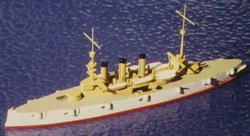
Ed Antin (USA) produced basswood models from 1975 through the 1980's, chiefly of US Naval ships. Antin's USS New York (right) is from David Orzel's collection
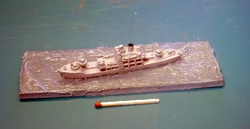
Karl-Erik Bostrom (Sweden) produces resin models of Swedish naval subjects, such as minelayer Alvsknabben (right).

Cy Broman (USA) was an innovator in the scratch building of 1:1200 models. Broman started HR Products in the early 1960's and operated it until his death in 1993. HR Products still produce metal parts in various scales for ship model builders. Broman scratch built models starting as far back as before WW II. In the early 1960's he experimented with a number of new mediums for scratch building, introducing sheet plastic and metal fittings onto traditionally carved wood hulls, and later pioneered the use of resin parts and hulls. Broman's HMS Dreadnought is illustrated, right.
W.D.G. Blundell (UK), active in the 1960's-70's
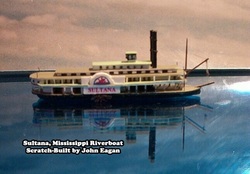
John Eagan (USA) produces occasional scratch built modelsand conversions along with his own "Eagan Ships" line of metal castings. His Mississippi sidewheeler Sultana is shown on right.
William Hartings (USA)
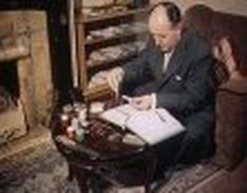
Duncan Haws (UK): a noted producer of paper and card stock models of liners and warships in the 1950's and 60's. Born in 1921 to a noted Liverpool shipping family, Mr. Haws began his model building while working as a travel agent for Thomas Cook & Co. and later went on to publish the well-known series "Merchant Fleets in Profile" along with a number of other books on maritime subjects. As of 2014, he and his wife still reside at Gosport, UK.
Video still at right shows Duncan Haws hard at work at home by the fireplace in 1956 (from: http://www.britishpathe.com/video/model-ships).
Video still at right shows Duncan Haws hard at work at home by the fireplace in 1956 (from: http://www.britishpathe.com/video/model-ships).
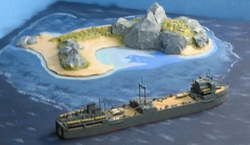
Uwe Gens Hoppe (Germany) produces wood models, chiefly Japanese and U.S. Navy subjects. Sells on eBay, accepts commissions. Diorama at right from Kevin Stewart's collection shows Hoppe's Tonan Maru.
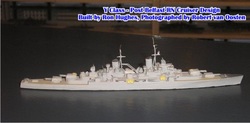
Ron Hughes (UK) produces high quality models of naval and commercial ships in a variety of scales including 1/1250.
Len Jordan (UK): did his own line of wood models in the 1980's before starting his own commercial line of British merchant ships.
John Lindsay (UK)
John Lindsay (UK)

Michael London (Canada), a retired civil engineer and prolific model builder, has also written numerous magazine articles on the subject, and, under his pen name Michael Ainsworth, has published the book "Warships in Miniature". His models include the passenger steamer City of New York, right.
David Manning (UK): active in the 1960's-70's.
Leo Marriott (UK): active in the 1960's-70's
Hugh O'Connor (USA)
P. Otten (Germany) produced a number of resin liners and trooper conversions
Leo Marriott (UK): active in the 1960's-70's
Hugh O'Connor (USA)
P. Otten (Germany) produced a number of resin liners and trooper conversions
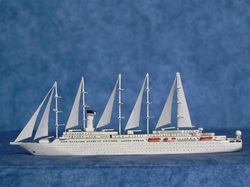
Harry Piel (Germany) produces custom balsa wood and plastic models for private clients (http://www.minishipart-harry-piel.de/).
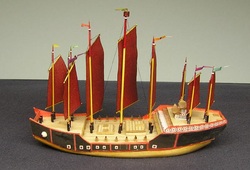
Ulrich Rudofsky (USA) produces high quality wood and paper models of racing yachts and other unusual subjects, such as Zheng-He's reassure ship, right.
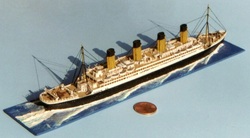
Don Simon (USA) has done a number of high quality 1/1250 scale scratchbuilds, such as liner Olympic, right.
Wilhelm Thuemmler (Germany) produces highly crafted paper models of naval and commercial ships, often in diorama settings.
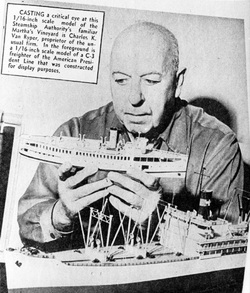
Charles K. VanRyper (USA), right, began producing model ships in his Martha's Vineyard workshop in 1933 and continued working in a variety of scales until 1960. His 1/1200 scale models, though simple, are accurate and highly collectable.
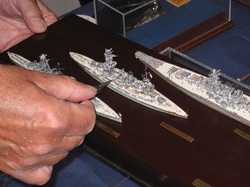
H.P. Weiss (Germany) produces exceptionally high quality paper models of all types of ships. The three Japanese battleships (right) show the incredible detail he achieves.
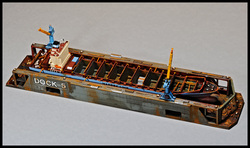
Harald J. Wiesner (Germany) produces the highly regarded "NAUTIK ART" models and dioramas of maritime subjects occasionally offered on eBay. His Olga Maersk in drydock (right) is an example.
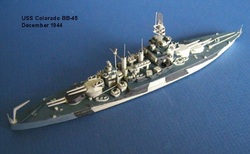
John Youngerman (USA) prolific producer of high quality models of naval subjects in wood as well as masters for various commercial producers such as Hai and Navis/Neptun. His model of USS Colorado (right) can be found on his web site (Youngerman Ship Models).
___________________________________________________________________________________________________